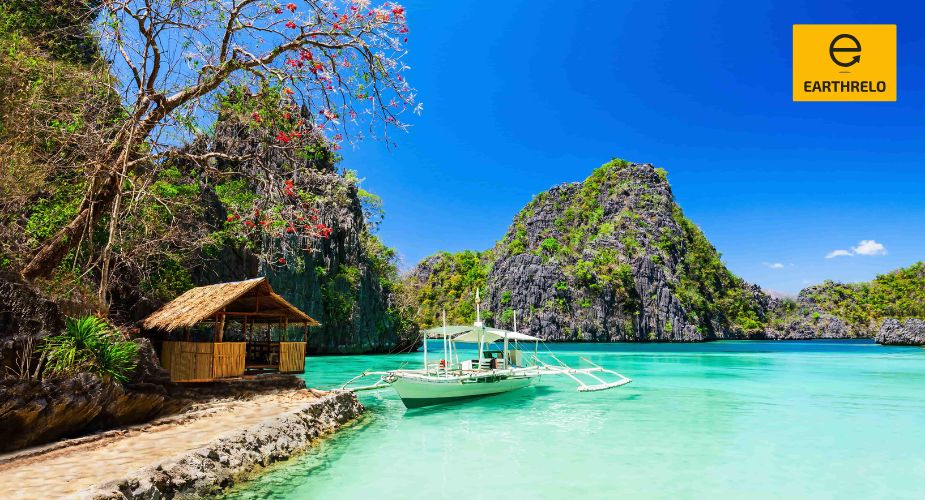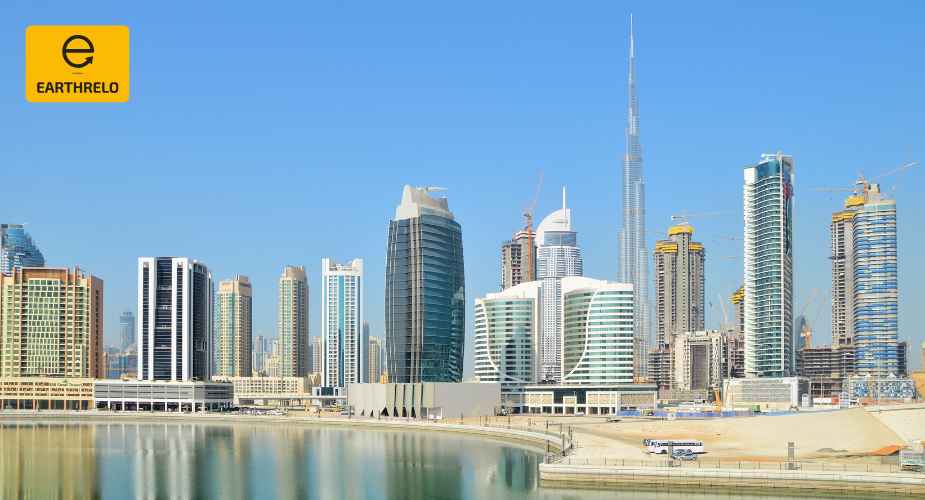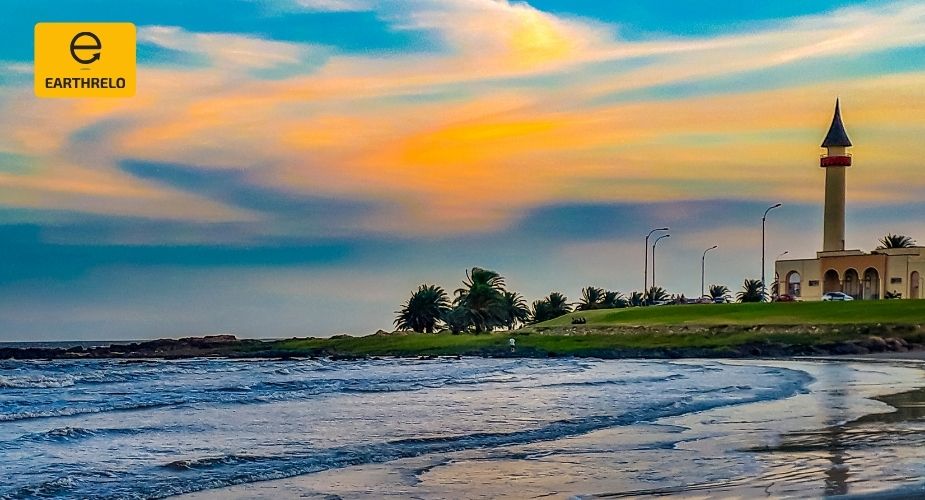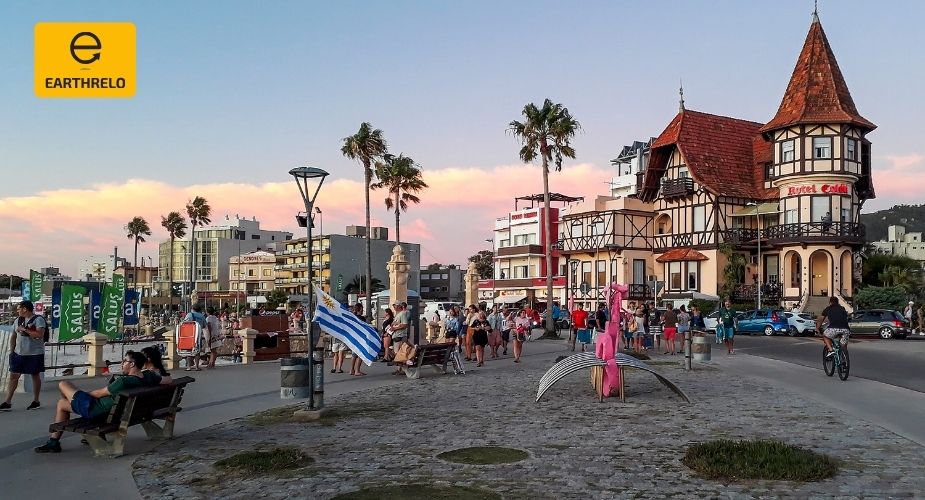- May 19, 2025
Moving to Philippines from USA has become a growing trend among Americans seeking a change of pace, cost of living advantages, and a culturally rich lifestyle. Whether it’s the tropical climate, the warm and welcoming communities, or the slower, more relaxed pace of life, many find the idea of relocating to the Philippines deeply appealing.
This guide was designed for individuals and families planning to move to Philippines and looking for practical steps to make their transition as seamless as possible. There’s much more to this process than simply packing a few boxes—it involves preparation, paperwork, and careful coordination. Choosing a trusted international relocation partner like Earthrelo can make all the difference in how smooth your journey turns out to be.
If you’re wondering how to move to Philippines without the stress and uncertainty that often comes with international relocation, you’re in the right place. With the right support and a solid plan, the dream of immigrating to the Philippines can become your new reality.
Moving to Philippines from USA: Where to Begin?
Moving to Philippines from USA requires early planning, smart decision-making, and reliable assistance every step of the way. The process might feel overwhelming at first, but with the right approach, it becomes a manageable and even exciting project.
Understanding Your Reasons for Moving
Before diving into logistics, it’s important to be clear on why you’re making this move. Whether it’s retirement, a lifestyle upgrade, or a work relocation, knowing your primary motivation will help you shape your moving goals and expectations. This clarity is especially helpful when you begin working with Earthrelo to create a customized moving plan tailored to your needs.
Creating a Personalized Moving Timeline
Once your decision is final, the next step is building a realistic timeline. Planning your move to Philippines takes time—especially if you’re shipping household goods, notifying landlords or employers, and saying goodbye to friends and family. Earthrelo recommends starting your preparations at least three to six months in advance to allow time for organizing, paperwork, and logistics.
Decluttering and Deciding What to Take
One of the first tasks in how to move to Philippines is deciding what’s worth bringing. International shipping costs are often calculated based on volume, so it’s worth evaluating your belongings and downsizing where possible. Earthrelo can provide insights on what’s practical to ship versus what’s better to buy locally once you’ve settled in.
Learning About Your New Home
As you prepare to immigrate to Philippines, take time to research its culture, geography, and lifestyle. Understanding how life differs from what you’re used to in the U.S. will help reduce culture shock and ease your adjustment period. Reading about everyday customs, transportation norms, and daily routines can make your transition smoother and more enjoyable.
Also Read: What To Expect On Moving Day
Choosing the Right Time to Move
Timing plays a major role when moving to Philippines from USA. Weather conditions, shipping timelines, and seasonal pricing variations can all influence your relocation experience and overall cost.
Considering the Climate
The Philippines has two primary seasons—dry and rainy. The dry season, from November to May, is generally more favorable for relocations. Roads are more accessible, and delays due to weather are less likely. Earthrelo often advises clients to plan their move to Philippines during this window for a smoother, safer transition.
Shipping Seasons and Cost Impacts
International shipping has peak and off-peak seasons that affect both cost and availability. Typically, summer months and the period just before the holidays are the busiest. If you want to save on costs and have more flexibility with shipping schedules, the off-peak months (usually February to April or August to October) are ideal.
Earthrelo offers flexible scheduling and competitive pricing year-round, helping you lock in the best value while meeting your timeline goals.
Aligning Personal Milestones with Your Move
Beyond weather and logistics, your personal schedule matters too. Are you completing a lease? Ending a job? Planning around a school year? These life transitions can help you pinpoint the ideal time for how to move to Philippines smoothly. Earthrelo works closely with you to align every step of your move with your lifestyle and commitments.
Planning Ahead for a Stress-Free Experience
One key element of Philippines immigration is early preparation. Shipping arrangements, customs paperwork, and packing take time—and rushing them increases stress and risk. Working with Earthrelo ensures each stage is handled with care and expertise, making your move more organized from day one.
Moving to Philippines?
Contact Us TodayWhat to Pack for Your Move to Philippines
One of the most important steps when moving to Philippines from USA is deciding what to bring with you. Choosing the right items ensures you’ll be comfortable in your new environment while keeping your shipment practical and cost-effective.
Deciding What’s Essential
When you move to Philippines, you’ll quickly discover that many everyday items are available locally. However, there are certain essentials you’ll want to take with you—personal items, important documents, clothes suited for tropical weather, and anything that holds sentimental value. Earthrelo helps you sort through your belongings, advising on what should definitely make the trip and what might be better left behind.
Understanding Local Availability
Before finalizing your packing list, consider what you can buy once you arrive. Things like toiletries, basic furniture, and home appliances are accessible across urban areas. That said, if you’re accustomed to specific brands or products, it’s wise to bring enough to last until you get settled. Learning how to move to Philippines also involves familiarizing yourself with local shopping options and adjusting your expectations accordingly.
Electronics and Compatibility
Electronic devices often require special attention. The Philippines operates on 220 volts, unlike the 110 volts used in the U.S. Devices that aren’t dual voltage may need converters or won’t function at all. Earthrelo can guide you on packing electronics safely and choosing voltage-compatible items to take along, ensuring your devices survive the journey and work upon arrival.
Labeling and Organizing Your Shipment
Staying organized is crucial when immigrating to Philippines. Labeling boxes clearly, listing their contents, and creating an inventory checklist can save you time and confusion later. Earthrelo provides expert packing support and detailed documentation preparation, making the unpacking process as efficient as your relocation itself.
Shipping Your Belongings: Options and Costs
One of the most complex parts of moving to Philippines from USA is figuring out how to transport your belongings across the ocean safely and affordably. Knowing your options and choosing the right one for your situation makes a significant difference.
Choosing Between Air Freight and Sea Freight
There are two primary methods to move to Philippines—air freight and sea freight. Air freight is faster but comes at a higher price. Sea freight, on the other hand, is more economical and allows for larger shipments, though it takes several weeks for delivery. If time isn’t critical, most families and individuals opt for sea freight due to its affordability. Earthrelo offers both services and can help determine the most practical solution based on your timeline and budget.
Understanding Container Sizes
For sea freight, choosing the right container size is key. A full container load (FCL) is best for larger households, while a less-than-container load (LCL) works for smaller shipments. Earthrelo assists in evaluating your inventory and selecting the most efficient container setup for your international move to the Philippines.
Estimating Shipping Costs
Costs for shipping depend on the volume of goods, origin and destination ports, service type, and additional handling needs. On average, shipping a household from the U.S. to the Philippines can range widely, especially when factoring in customs clearance and inland transportation. Earthrelo provides transparent quotes and handles logistics so you don’t have to deal with surprises later.
Tracking and Shipment Support
Once your shipment is en route, staying updated becomes a priority. Earthrelo offers real-time tracking and consistent communication so you’re always informed about the location and status of your shipment. This service adds peace of mind to your overall experience of how to move to Philippines.
Customs Regulations and Import Rules in the Philippines
A crucial aspect of moving to Philippines from USA involves understanding the country’s customs regulations. Misunderstanding these rules can result in delays, fines, or even confiscated goods, so it’s essential to be well-informed before shipping anything.
Duties and Exemptions for Household Goods
When you move to Philippines with used household items, you may be eligible for duty-free entry under certain conditions. Goods must be used, owned for more than six months, and intended for personal use. New or commercial items could be taxed. Earthrelo ensures that your documentation is properly aligned with these requirements to make the customs process smooth and penalty-free.
Items That Are Restricted or Prohibited
There are clear restrictions on what you can bring into the country. Prohibited items include firearms, illegal drugs, certain chemicals, and pirated materials. Some items may be restricted and require permits. Being aware of these limitations is essential to avoid any legal issues during your Philippines immigration. Earthrelo assists clients in screening their shipment lists to identify items that might trigger delays.
Documentation Requirements
Proper documentation is a must when you’re moving to Philippines from USA. You’ll need an inventory list, proof of ownership, a bill of lading or air waybill, and valid identification. Any discrepancies can delay clearance. Earthrelo provides comprehensive customs documentation support, ensuring everything is filed correctly and on time.
Clearing Customs Without Delays
The customs clearance process can feel overwhelming if you’re unfamiliar with it. Delays happen when forms are incomplete or when regulations aren’t followed. Earthrelo’s local expertise and customs handling experience take the guesswork out of the equation, allowing you to focus on settling into your new life as you immigrate to Philippines with confidence.
Finding a Home After You Move to the Philippines
A major milestone in moving to Philippines from USA is securing a place to live that suits your lifestyle and budget. Whether you’re looking for a quiet beachside retreat or the convenience of city life, understanding the housing market in the Philippines is key to making a smooth transition.
Renting Versus Buying Property
When planning to move to Philippines, most expats initially choose to rent rather than buy. Renting offers flexibility as you get to know your surroundings and explore different neighborhoods. Lease agreements are typically straightforward and can range from six months to a year. Earthrelo helps clients connect with trusted local contacts, making it easier to evaluate rental options and navigate lease agreements.
Buying property in the Philippines is more complex, especially for foreign nationals. There are legal restrictions that often make long-term leasing or buying through a Filipino spouse or partner more viable. Understanding these nuances is essential when you’re learning how to move to Philippines and planning for long-term residency.
Popular Cities and Areas for Expats
Where you settle after immigrating to Philippines will greatly affect your daily lifestyle. Metro Manila offers urban living with proximity to shopping, hospitals, and schools. Cebu provides a balance between city amenities and island charm. Davao is known for being peaceful and affordable. Each location has its own vibe, and Earthrelo offers guidance based on your preferences, helping you feel at home right from day one.
Temporary Housing Options
If you’re moving to Philippines from USA without a permanent home lined up, consider short-term rentals while you get your bearings. These include serviced apartments, hotels with long-stay discounts, or temporary furnished flats. Earthrelo can assist in locating temporary housing that aligns with your arrival schedule and budget.
Navigating Local Housing Norms
Philippine housing may differ from what you’re used to in the U.S. Homes may not have central heating, and appliances can vary in quality and size. It’s important to understand what’s included in rental agreements and to clarify utility responsibilities. With Earthrelo’s relocation expertise, you can avoid miscommunications and find a home that meets your expectations as you complete your move to Philippines.
Adjusting to Life in the Philippines
Once the boxes are unpacked and you’ve officially completed your moving to Philippines from USA journey, the real adventure begins—settling into a new country. Adjusting to local customs, building a support network, and learning how daily life works are key to feeling at home.
Embracing Cultural Differences
The Philippines has a unique blend of Asian and Western influences, but certain cultural differences can still take time to get used to. Social customs, communication styles, and daily routines might feel unfamiliar at first. Taking the time to observe, ask questions, and adapt with an open mind will help you settle more comfortably. Earthrelo offers cultural adjustment resources that support your emotional and social transition as you immigrate to Philippines.
Managing Daily Essentials
Once you move to Philippines, everyday tasks like paying bills, using public transportation, and setting up utilities might require a learning curve. Some services are done in person rather than online, and procedures may vary by city. Learning these new systems is part of how to move to Philippines successfully, and Earthrelo provides checklists and relocation guides to make daily tasks easier to manage.
Healthcare and Safety Considerations
Access to healthcare varies across regions. Urban centers typically have modern hospitals and English-speaking staff, while rural areas may offer fewer facilities. Safety is generally not a concern in most expat-friendly areas, though it’s wise to stay updated on local advisories. Earthrelo supports clients by offering pre-arrival insights on healthcare options and how to prepare for emergencies.
Building a Support System
One of the most rewarding parts of moving to Philippines from USA is building relationships in your new community. Whether through expat groups, social clubs, or your neighborhood, finding people who share your interests helps ease the transition. Earthrelo encourages clients to engage with local networks and can recommend expat resources and community meetups.
Cost of Living in the Philippines
Understanding the cost of living is a key part of planning your move. When moving to Philippines from USA, many expats are pleasantly surprised by how affordable daily life can be. That said, costs can vary based on lifestyle choices and location, so having a clear picture will help you budget accordingly.
Housing and Accommodation Expenses
Housing costs in the Philippines are significantly lower than in most parts of the United States. In cities like Manila or Cebu, you can find fully furnished apartments at a fraction of the rent you’d pay in the U.S. Smaller towns and provinces offer even lower prices. When you move to Philippines, it’s helpful to have temporary housing lined up first before settling into a long-term rental or lease agreement. Earthrelo offers relocation advice to help you navigate real estate options based on your budget and location preferences.
Food and Grocery Costs
Grocery prices in the Philippines are generally affordable, especially if you shop at local markets. Imported goods, however, can be more expensive. Dining out is also budget-friendly, with many meals available for just a few dollars. One of the easiest ways to adjust after immigrating to Philippines is to explore local cuisine, which is not only cost-effective but also part of the cultural experience.
Transportation and Daily Travel
Public transportation is widely used and very affordable. Jeepneys, tricycles, and buses are common, while taxis and ride-hailing apps are available in urban areas. If you’re used to driving in the U.S., you might need some time to adjust to local traffic and road conditions. Learning how to move to Philippines also includes adapting to different transportation systems. Earthrelo provides relocation support that includes transportation guidance and safety tips to help you get around with confidence.
Utilities and Internet
Utilities in the Philippines, including electricity, water, and internet, are reasonably priced. Electricity bills can be higher if you frequently use air conditioning, which is common in the country’s tropical climate. Internet availability is improving and is generally sufficient for remote work and daily browsing. When moving to Philippines from USA, Earthrelo helps clients understand local utility providers and services so there are no surprises when settling in.
Budgeting for a Comfortable Lifestyle
While the overall cost of living is lower, lifestyle choices such as frequent travel, upscale dining, or imported shopping can raise your expenses. The key to enjoying your life abroad is creating a realistic monthly budget that reflects your goals and preferences. Earthrelo’s relocation planning services include cost-of-living breakdowns that help you manage your finances from day one of your move to Philippines.
Earthrelo’s Role in Your International Move
Having a reliable partner can make a world of difference when moving to Philippines from USA. With Earthrelo, you’re not just getting a transportation service—you’re gaining a dedicated relocation partner that understands the complexities of international moves.
Customized Relocation Plans
Every move is unique, and Earthrelo takes that into account with customized relocation plans. Whether you’re relocating solo, as a couple, or with a family, our team works closely with you to design a step-by-step strategy tailored to your specific timeline and needs. This approach simplifies every aspect of how to move to Philippines, reducing stress and increasing confidence.
Complete Door-to-Door Services
From packing and loading to shipping and delivery, Earthrelo manages the entire relocation process. We ensure that your belongings are handled with care and that all items arrive safely at your new home. This seamless service allows you to focus on the exciting aspects of immigrating to Philippines, while we handle the details behind the scenes.
Expert Customs Guidance
Navigating customs can be one of the most intimidating parts of international relocation. Earthrelo takes this burden off your shoulders by managing all customs documentation, ensuring compliance with import regulations, and facilitating smooth clearance. This is especially crucial when moving to Philippines from USA, where customs requirements must be followed strictly to avoid delays or penalties.
Pre- and Post-Move Support
Earthrelo’s commitment doesn’t end once your shipment is on the way. We support you before, during, and after your move with regular updates, local transition tips, and ongoing communication. From helping you prepare a packing list to advising on neighborhood safety, our team stays connected to ensure your move to Philippines is a complete success.
Trusted International Expertise
When you immigrate to Philippines, having an experienced team by your side is invaluable. Earthrelo’s years of experience in global relocations mean we anticipate challenges and prevent common mistakes that can derail a move. Our global network, combined with local knowledge, ensures your transition is smooth, secure, and aligned with your personal goals.
Also Read: What to Expect from Corporate Hollywood Movers: A Complete Guide
Wrapping Up
Moving to Philippines from USA is more than a change of address—it’s the beginning of an exciting new chapter. From adjusting to a tropical climate to experiencing a new culture and lifestyle, relocating to the Philippines can be deeply rewarding when done with the right planning and guidance.
The journey doesn’t start with your flight—it begins the moment you commit to your decision to move to Philippines. Preparing early, researching housing and costs, and understanding local systems all contribute to a smooth transition. And perhaps most importantly, choosing a relocation partner like Earthrelo ensures that your belongings, your documents, and your peace of mind all arrive safely at your new home.
If you’re exploring how to move to Philippines and wondering what steps to take next, remember that expert help is always available. Whether it’s packing, shipping, customs, or settling in, Earthrelo walks with you through each stage of your move. With our experience and dedication, immigrating to Philippines becomes a journey marked by clarity and confidence.
Take the first step today and let your adventure begin with the support of Earthrelo by your side.





